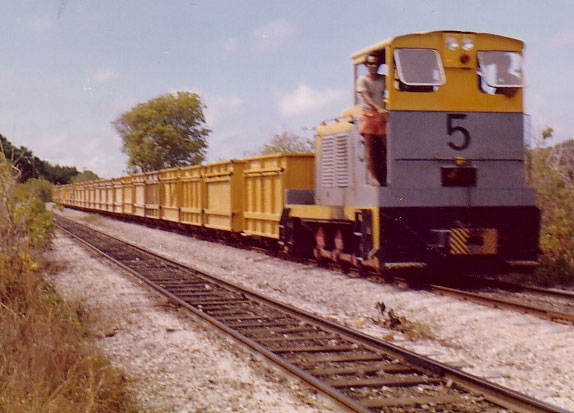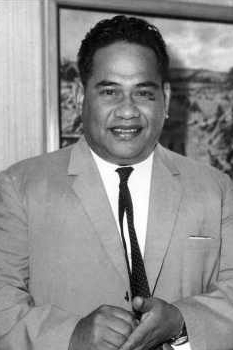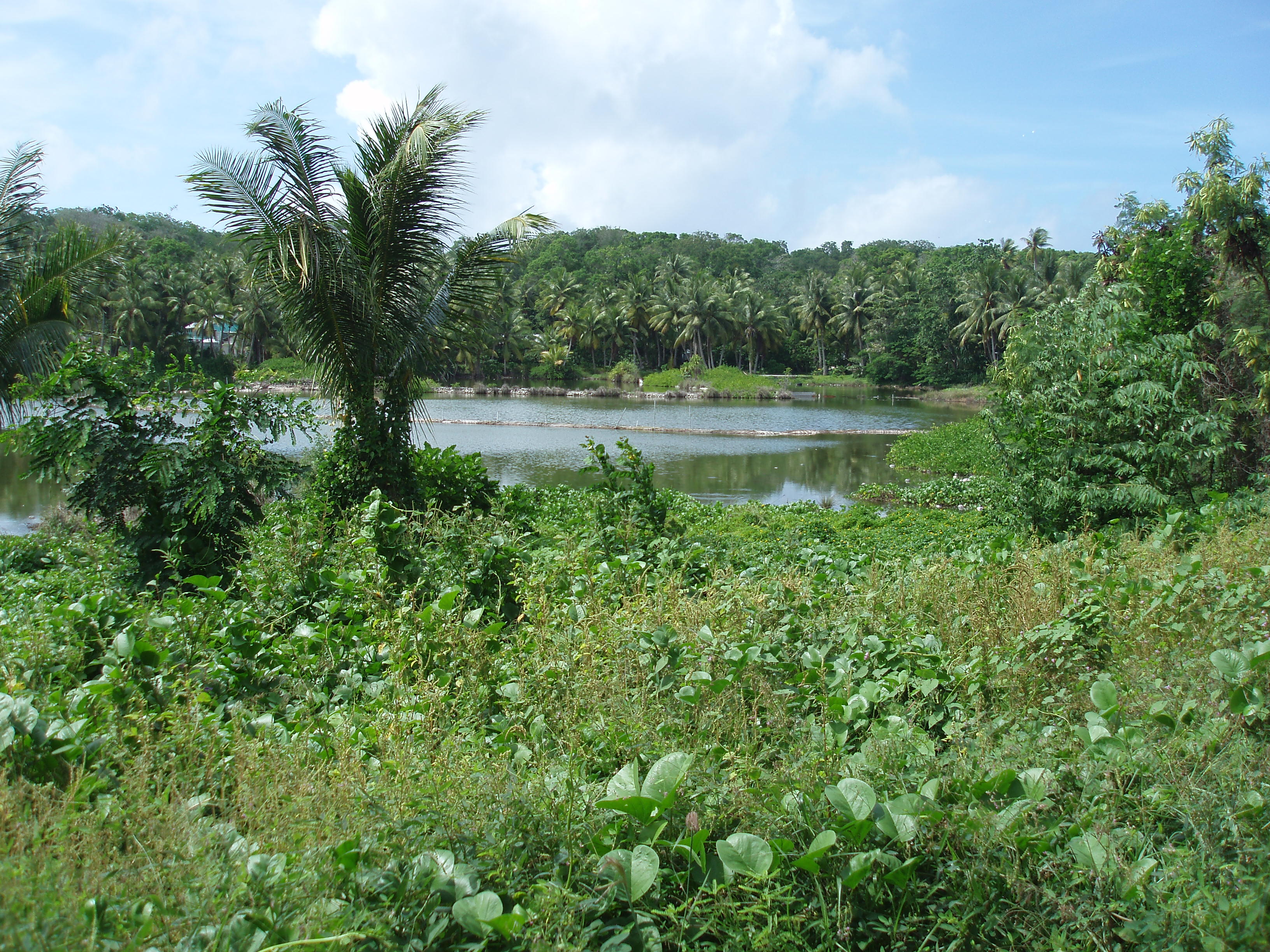|
Buada District
Buada is a district in the Pacific nation of Nauru. It is the only district in Buada Constituency. It has a population of 739 (2011). Geography The only landlocked district in the Republic of Nauru, it is in the southwestern part of the island and covers the central Buada Lagoon. Buada is a fertile piece in Nauru and mostly wet and tropical due to the mass vegetation (compared to the rest of the island). It covers an area of , which in comparison with other of Nauru's districts, makes it among the largest. Buada has retained more vegetation than other districts, where, because of mining, much vegetation has been lost. The proximity of the Buada Lagoon has been relevant to the survival of vegetation. Climate Buada has a tropical rainforest climate (Af) with heavy rainfall year-round. History The district held the ancient name Arenibok as early as the 1500s to the late 1800s. The Germans referred to it as 'Bush Village' (1889) after agreeing to its new boundaries located by the G ... [...More Info...] [...Related Items...] OR: [Wikipedia] [Google] [Baidu] |
Districts Of Nauru
Nauru ( or ; na, Naoero), officially the Republic of Nauru ( na, Repubrikin Naoero) and formerly known as Pleasant Island, is an island country and microstate in Oceania, in the Central Pacific. Its nearest neighbour is Banaba Island in Kiribati, about to the east. It further lies northwest of Tuvalu, northeast of Solomon Islands, east-northeast of Papua New Guinea, southeast of the Federated States of Micronesia and south of the Marshall Islands. With only a area, Nauru is the third-smallest country in the world behind Vatican City and Monaco, making it the smallest republic as well as the smallest island nation. Its population of about 10,000 is the world's second-smallest (not including colonies or overseas territories), after Vatican City. Settled by people from Micronesia circa 1000 BCE, Nauru was annexed and claimed as a colony by the German Empire in the late 19th century. After World War I, Nauru became a League of Nations mandate administered by Aust ... [...More Info...] [...Related Items...] OR: [Wikipedia] [Google] [Baidu] |
Nauruan Tribal War
The Nauruan Civil War was fought from 1878 to 1888, between forces loyal to incumbent King Aweida of Nauru and those seeking to depose him in favour of a rival claimant. The war was preceded by the introduction of firearms to the island and its inhabitants, Nauruans, as a whole. For the majority of the war, the loyalists and the rebels found themselves in a stalemate, with one side controlling the northern and the other the southern part of the island. In 1888, the German Empire intervened by restoring Aweida to the throne and confiscating combatants' firearms; by the time they had finished, the German soldiers had confiscated 791 rifles from both belligerents, nearly one gun per every remaining living inhabitant of the island. By historical estimates, Nauru had a population of approximately 1,400 during the height of the war, while by the end of it there were some 900 native inhabitants left, i.e. over one third of island's population perished as a consequence of the conflict. H ... [...More Info...] [...Related Items...] OR: [Wikipedia] [Google] [Baidu] |
Rail Transport In Nauru
Rail transport in Nauru is used for moving calcium pyrophosphate from the island's interior to the cantilever jetties on the island's western coast. For this purpose, a 3,900 m long, 0.6096 m narrow gauge railway was built by the Pacific Phosphate Company in 1907. The line passes through the districts of Aiwo, Buada, Denigomodu, Nibok, Uaboe and Anibare. History The railway at Aiwo jetty was electrified in 1912, but replaced by a conveyor belt between the storage bins and the jetty head. The gauge was upgraded to 0.9144 m narrow gauge railway by the British Phosphate Commission in 1920. In the past, steam engines were used to power the trains, but the railway is nowadays worked by diesel engines, though occasionally, a tractor is used. With Nauru's phosphate deposits almost depleted, the future of the railway is uncertain. The trains were still running as of 2008. Nauru's phosphate train features on several Nauru stamps, including a series from 1980 (Yvert no. 211-213) an ... [...More Info...] [...Related Items...] OR: [Wikipedia] [Google] [Baidu] |
List Of Settlements In Nauru ...
The Republic of Nauru originally consisted of 169 villages; by 1900 these were already partly abandoned, uninhabited or destroyed. With the increasing population growth the single villages merged into a single connected settlement, which today is spread out around the entire coastal strip. The village names are from the book Nauru - Ergebnisse der Südseeexpedition by Paul Hambruch, who researched on the island during the Hamburger Südsee-Expedition 1908–1910. The village names were changed following the orthographic reform of the Nauruan language of 1939. List See also * Geography of Nauru {{Nauru topics Nauru Cities A city is a human settlement of notable size.Goodall, B. (1987) ''The Penguin Dictionary of Human Geography''. London: Penguin.Kuper, A. and Kuper, J., eds (1996) ''The Social Science Encyclopedia''. 2nd edition. London: Routledge. It can be def ... [...More Info...] [...Related Items...] OR: [Wikipedia] [Google] [Baidu] |
Roland Kun
Roland Tullen Kun (born 6 May 1970) is a Nauruan politician and Member of Parliament. Political career MP and Minister Kun was elected in 2004 to serve as a Member of the Parliament of Nauru and served as Minister of Justice. Kun was elected to the seat of Buada in 2004, 2007, 2008, in the April and June 2010 elections, and in 2013. He was a member of the Scotty government from 2004 to 2007, a member of the Stephen government from 2007 to 2012, and a member of the Dabwido government for much of the first half of 2013. From December 2007 to November 2011 he was Minister for Fisheries and Minister for Education. From June 2012 until February 2013, he held portfolios of Minister of Finance of Nauru, Finance & Sustainable Development, as well as Education and Justice & Border Control. Kun is also an expert on fisheries, one of Nauru's main industries. Crossing the floor Kun was one of the founding members of reform group Naoero Amo, Naoero Amo (Nauru First). He was appointed M ... [...More Info...] [...Related Items...] OR: [Wikipedia] [Google] [Baidu] |
President Of Nauru
The president of Nauru is elected by Parliament from among its members, and is both the head of state and the head of government of Nauru. Nauru's unicameral Parliament has 19 members, with an electoral term of 3 years. Political parties only play a minor role in Nauru politics, and there have often been periods of instability in the Presidential office. Shifting allegiances among a small number of individuals can lead to frequent changes in the makeup of the government of the day, including the presidential position itself. List of presidents Latest election See also * List of colonial governors of Nauru References {{Heads of state and government of Oceania Politics of Nauru Nauru Presidents President most commonly refers to: *President (corporate title) *President (education), a leader of a college or university *President (government title) President may also refer to: Automobiles * Nissan President, a 1966–2010 Japanese ful ... 1968 establishment ... [...More Info...] [...Related Items...] OR: [Wikipedia] [Google] [Baidu] |
Parliament Of Nauru
The Parliament of Nauru has 19 members, elected for a three-year term in multi-seat constituencies. The President of Nauru is elected by the members of the Parliament."About Parliament" Parliament of Nauru The number of seats was increased to 19 following elections in 2013. , Australian Department of Foreign Affairs and Trade. Retrieved 10 November 2012 The members of the Parliament of Nauru are elected by a . History The Parliament of Nauru came into existence with th ...[...More Info...] [...Related Items...] OR: [Wikipedia] [Google] [Baidu] |
Ruben Kun
HE Ruben James Kun (30 March 1942 – 21 September 2014) was a political figure from the Pacific nation of Nauru and was president of the Republic of Nauru. Early career Kun was a lawyer before becoming a political figure. He was the minister assisting the president of Nauru in the cabinets of Lagumot Harris in 1978 and 1995–1996. He was the speaker of the Parliament of Nauru from August 1981 to December 1986. He was Minister of Finance under Bernard Dowiyogo and Lagumot Harris from January 1978 to May 1978, and again in the cabinet of Lagumot Harris from November 1995 to November 1996. President of Nauru Kun succeeded Kennan Adeang as president of Nauru from 19 December 1996 to 13 February 1997, and was succeeded by Kinza Clodumar. Post-presidency Kun was again Minister of Finance under Bernard Dowiyogo from August 1998 to December 1998. Under the Pacific Solution asylum policy, Australia has an arrangement with Nauru that allows asylum seekers arriving in Australia t ... [...More Info...] [...Related Items...] OR: [Wikipedia] [Google] [Baidu] |
Tropical Rainforest Climate
A tropical rainforest climate, humid tropical climate or equatorial climate is a tropical climate sub-type usually found within 10 to 15 degrees latitude of the equator. There are some other areas at higher latitudes, such as the coast of southeast Florida, USA, and Okinawa, Japan that fall into the tropical rainforest climate category. They experience high mean annual temperatures, small temperature ranges, and rain that falls throughout the year. Regions with this climate are typically designated ''Af'' by the Köppen climate classification. A tropical rainforest climate is typically hot, very humid, and wet. Description Tropical rain forests have a type of tropical climate in which there is no dry season—all months have an average precipitation value of at least . There are no distinct wet or dry seasons as rainfall is high throughout the months. One day in a tropical rainforest climate can be very similar to the next, while the change in temperature between day and night ... [...More Info...] [...Related Items...] OR: [Wikipedia] [Google] [Baidu] |
Buada Lagoon
Buada Lagoon is a landlocked, slightly brackish, freshwater lake of Buada District in the island nation of Nauru. It occupies about . The lagoon is classified as an endorheic lake, meaning there is no outflow to other bodies of water such as oceans or rivers. The Buada Lagoon is the biggest and only true lake in Nauru, a small independent republic in Oceania consisting of a flat island of 21.3 km² in area. The lake lies in Nauru's Buada district, from which it gets its name. It is not a lagoon as such, in that the lake is not joined to the sea, but its water is slightly brackish. Freshwater is rare in Nauru, being present only in the form of a small phreatic zone, the Moqua Well (a small underground lake) and the Buada Lagoon, which is the most visible, rivers and streams being utterly absent from the country. The lake has traditionally been used for pisciculture, which saw the raising of milkfish for human consumption through the centuries, and even though this pra ... [...More Info...] [...Related Items...] OR: [Wikipedia] [Google] [Baidu] |
Nauru
Nauru ( or ; na, Naoero), officially the Republic of Nauru ( na, Repubrikin Naoero) and formerly known as Pleasant Island, is an island country and microstate in Oceania, in the Central Pacific. Its nearest neighbour is Banaba Island in Kiribati, about to the east. It further lies northwest of Tuvalu, northeast of Solomon Islands, east-northeast of Papua New Guinea, southeast of the Federated States of Micronesia and south of the Marshall Islands. With only a area, Nauru is the third-smallest country in the world behind Vatican City and Monaco, making it the smallest republic as well as the smallest island nation. Its population of about 10,000 is the world's second-smallest (not including colonies or overseas territories), after Vatican City. Settled by people from Micronesia circa 1000 BCE, Nauru was annexed and claimed as a colony by the German Empire in the late 19th century. After World War I, Nauru became a League of Nations mandate administered by Austra ... [...More Info...] [...Related Items...] OR: [Wikipedia] [Google] [Baidu] |
Pacific
The Pacific Ocean is the largest and deepest of Earth's five oceanic divisions. It extends from the Arctic Ocean in the north to the Southern Ocean (or, depending on definition, to Antarctica) in the south, and is bounded by the continents of Asia and Oceania in the west and the Americas in the east. At in area (as defined with a southern Antarctic border), this largest division of the World Ocean—and, in turn, the hydrosphere—covers about 46% of Earth's water surface and about 32% of its total surface area, larger than Earth's entire land area combined .Pacific Ocean . '' Britannica Concise.'' 2008: Encyclopædia Britannica, Inc. The centers of both the |
.jpg)



.jpg)